Solving Egress Traffic Inefficiencies: A Data-Centric Approach to Cost Reduction
Key Takeaways
- Understanding the intricacies of egress traffic is crucial to efficient content delivery and cost optimization in streaming services.
- Inefficient egress traffic management can lead to unnecessary expenses, such as redundant data transfers or suboptimal routing paths.
- The volume of egress traffic directly impacts content delivery costs, with cloud providers and CDNs typically charging based on the amount of data transferred.
- Efficient egress traffic solutions can significantly reduce costs associated with content delivery by minimizing unnecessary data transfers and optimizing routing paths.
In the ever-evolving world of streaming services, understanding egress traffic—that is, the flow of data packets exiting a network or system—is critical. An efficient content delivery strategy is heavily reliant on the effective management of egress traffic. This is particularly important as streaming platforms generate significant egress traffic due to the continuous transfer of video and audio data to end users. Moreover, the volume and management of egress traffic directly impacts the costs associated with content delivery.
Understanding Egress Traffic in Streaming
When it comes to streaming platforms, egress traffic is a key consideration. Streaming services generate considerable egress traffic as they continuously transfer video and audio data to end-users. This traffic is not just a stream of data—it’s the backbone of the content delivery process.
The volume of egress traffic directly impacts the costs associated with content delivery. Cloud providers and Content Delivery Networks (CDNs), such as Cachefly, typically charge based on the amount of data transferred. Therefore, inefficient egress traffic management can lead to unnecessary expenses such as redundant data transfers or suboptimal routing paths.
Understanding the intricacies of egress traffic is crucial for optimizing content delivery and minimizing costs. This includes being aware of peak usage periods, geographical distribution of users, and user behavior patterns. As Oracle points out, “The costs associated with data egress are an unwelcome surprise many organizations face early in their cloud migration journeys. While cloud services such as virtual machines and storage have fixed pricing, the cost to move data out of the cloud is variable and often unpredictable.”
Consequently, the key to minimizing content delivery costs and delivering a seamless user experience lies in implementing efficient egress traffic solutions. By understanding and managing egress traffic effectively, streaming platforms can significantly reduce the costs associated with content delivery and ensure that their services remain competitive in the rapidly evolving streaming landscape.
Unmasking Common Inefficiencies in Egress Routing
If you’re striving to reduce egress traffic inefficiencies and achieve cost reduction, you need to be aware of the common pitfalls in egress routing. Inefficient egress routing occurs when data packets do not follow the most optimal path, leading to increased latency, reduced performance, and higher costs. This can severely impact the user experience and your bottom line.
Load Balancing and Resource Utilization
One common inefficiency manifests in the lack of proper load balancing across multiple CDN providers or regions. This results in an uneven distribution of traffic and suboptimal resource utilization. If the traffic isn’t distributed evenly, it can lead to some servers being overloaded while others remain underutilized. This imbalance can cause latency issues, service disruptions, and ultimately, unhappy users.
The Role of Caching Mechanisms
Failing to leverage caching mechanisms effectively can lead to unnecessary requests to the origin server, thereby increasing egress traffic and associated costs. As Prosimo points out, “Using CDN services to cache static content such as images, videos, JavaScript, and CSS files can significantly lighten the load on your origin server, minimizing requests to cloud storage… Introducing a second layer of caching, like tiered distribution or regional edge caches, can further enhance the cache hit ratio, reducing costs associated with cloud storage and data transfer.”
Compression Techniques: A Double-Edged Sword
Another common inefficiency pertains to the use of compression techniques. Inefficient compression techniques or the absence of compression altogether can result in larger file sizes that consume more bandwidth and drive up egress costs. While compression can reduce the size of the data packets, making them quicker to transfer, inefficient compression can lead to unnecessary data bloat and higher costs.
Real-Time Monitoring and Analytics
Finally, not utilizing real-time monitoring and analytics to identify and address routing inefficiencies can lead to persistent issues and missed opportunities for optimization. Real-time analytics can provide valuable insights into traffic patterns, user behavior, and the performance of different CDN regions. This data can be used to make informed decisions on routing configurations and resource allocation, helping you better manage egress traffic and reduce costs.
In sum, understanding the common inefficiencies in egress routing and taking proactive measures to address them can go a long way in optimizing your content delivery strategy. By focusing on these areas, you can significantly reduce egress traffic inefficiencies and achieve cost reduction, ultimately improving the user experience and your bottom line.
Unlocking the Power of Data Analytics for Egress Traffic Patterns
When it comes to finding a solution for egress traffic inefficiencies and cost reduction, data analytics plays a pivotal role. By implementing robust data analytics tools, you can gain valuable insights into your egress traffic patterns, including peak usage times, geographical distribution, and user behavior. This allows you to identify trends, make informed decisions, and optimize your content delivery strategy.
Insights into Egress Traffic Patterns
Understanding your egress traffic patterns is the first step towards optimization. For instance, you might find that certain times of the day or specific regions generate a higher volume of traffic. This could be due to users accessing your streaming services during their leisure time, or it might be related to the geographical distribution of your user base. By identifying these patterns, you can make strategic decisions such as allocating more resources during peak usage times or enhancing your CDN coverage in high-traffic regions.
Identifying Inefficiencies in Content Delivery
Data analytics doesn’t just provide insights into your traffic patterns—it can also help you identify inefficiencies in your content delivery. For instance, you might discover that certain CDN regions are underutilized, or your caching strategy is not as effective as it could be. By analyzing the collected data, you can pinpoint these issues and take steps to address them, leading to a more efficient and cost-effective content delivery process.
Proactive Optimization with Machine Learning
Another powerful tool in your arsenal is machine learning. By utilizing machine learning algorithms, you can predict future traffic trends and proactively optimize your routing paths and resource allocation. This can lead to significant improvements in your content delivery performance and substantial cost reductions. Imagine being able to anticipate high-traffic periods and adjusting your resource allocation accordingly, or identifying potential bottlenecks before they impact your service. That’s the power of machine learning for egress traffic management.
Continuous Improvement through Monitoring and Review
Data analytics is not a one-and-done deal. It’s important to regularly monitor and review your data analytics reports to ensure continuous improvement and adaptation to changing traffic patterns. As your user base grows and their behavior evolves, your egress traffic patterns are likely to change. Regular monitoring allows you to stay on top of these changes and adjust your strategy accordingly.
Collaboration for Actionable Optimization Strategies
Finding egress traffic inefficiencies solutions and cost reduction doesn’t happen in a vacuum—it requires collaboration with cross-functional teams, including engineering, product, and finance. By working together, these teams can translate data insights into actionable optimization strategies. For instance, the engineering team can implement technical solutions, the product team can adjust product offerings based on user behavior, and the finance team can provide cost analysis to ensure your optimizations are financially viable.
In a nutshell, leveraging data analytics to identify traffic patterns is a powerful strategy for solving egress traffic inefficiencies and achieving cost reduction. It provides valuable insights, helps you identify and address inefficiencies, enables proactive optimization, and fosters collaboration among teams. So, the next time you’re looking for ways to optimize your content delivery and reduce costs, look no further than data analytics—it’s your secret weapon for egress traffic management.
Regional Routing Optimization: Reducing Costs and Boosting Performance
After identifying egress traffic patterns and inefficiencies, the next logical step towards a cost-effective solution is optimizing regional routing. Regional routing optimization involves implementing strategies that ensure efficient data transfer, enhance performance, and ultimately, reduce costs. Let’s delve into how you can achieve this.
Leveraging a Multi-CDN Strategy
The first step towards efficient regional routing is implementing a multi-CDN strategy. By leveraging the strengths of different CDN providers, you can ensure optimal coverage in various regions. A multi-CDN strategy not only improves performance and reliability but also optimizes costs by routing traffic to the most cost-effective provider in each region. Remember, each CDN has its unique strengths; some excel in specific regions or have advanced features that others lack. Harnessing these strengths can give you an upper hand in content delivery.
Capitalizing on Geolocation-Based Routing
Next, consider utilizing geolocation-based routing. This strategy involves directing users to the nearest CDN edge server based on their geographical location. The closer they are to the server, the less latency they experience, resulting in improved performance. Moreover, geolocation-based routing can also help reduce costs by minimizing the distance that data packets need to travel, thereby lowering data transfer costs.
Analyzing Regional Pricing Models
Part of your cost reduction strategy should involve analyzing regional pricing models and data transfer costs. Different CDN providers have different pricing models for each geographic area. By carefully analyzing these models, you can identify the most cost-effective CDN providers for each region and route your traffic accordingly. This approach can significantly reduce egress traffic costs and improve your bottom line.
Implementing Automated Failover Mechanisms
On the technical side, implementing automated failover mechanisms is crucial. These mechanisms route traffic to alternative CDN providers in the event of outages or performance degradation. An effective failover strategy can help maintain high availability, prevent service disruptions, and ensure a seamless user experience, even under unforeseen circumstances.
Continuous Monitoring and Adjustment
Finally, continuous monitoring and adjustment of your regional routing configurations is vital. As real-time performance metrics and cost analysis data roll in, adjustments may be needed to ensure optimal performance and cost-efficiency. Remember, the digital landscape is dynamic, and staying agile is key to staying ahead.
In conclusion, optimizing regional routing by leveraging a multi-CDN strategy, utilizing geolocation-based routing, analyzing regional pricing models, implementing automated failover mechanisms, and continuously monitoring and adjusting your configurations can significantly reduce egress traffic costs. This data-centric approach forms the foundation for cost-efficient egress, enabling organizations to make informed decisions, optimize content delivery, and maintain a competitive edge.
So, armed with these strategies, are you ready to tackle egress traffic inefficiencies and transform them into cost reduction opportunities?
About CacheFly
Beat your competition with faster content delivery, anywhere in the world! CacheFly provides reliable CDN solutions, fully tailored to your business.
Want to talk further about our services? We promise, we’re human. Reach us here.
Product Updates
Explore our latest updates and enhancements for an unmatched CDN experience.
Book a Demo
Discover the CacheFly difference in a brief discussion, getting answers quickly, while also reviewing customization needs and special service requests.
Free Developer Account
Unlock CacheFly’s unparalleled performance, security, and scalability by signing up for a free all-access developer account today.
CacheFly in the News
Learn About
Work at CacheFly
We’re positioned to scale and want to work with people who are excited about making the internet run faster and reach farther. Ready for your next big adventure?




